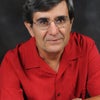Environmental health is controversial. Are we saying we care for the natural world, giving it human-like life and health? Second, is environmental health the health of wildlife and rivers or the health of humans suffering from disease caused by global warming, poisoned water or pollution?
Like all people from all over the world, Americans hate pollution but are not entirely clear about the environment or environmental health. Both seem abstract.
We have an Environmental Protection Agency in the federal government that feels very uncomfortable with its environmental and public health protective mission. After all, protecting human health and the environment is hugely difficult. I worked for the EPA for 25 years and I did not see much improvement in either public health or the natural world. Not that the EPA did not try; it did try to enforce the law. But the economic and political forces protecting the country's polluters are overwhelming.
Environmental and public health protection in America may be practically impossible as long as business has the upper hand.
This business, especially large corporate business in mining, agriculture, food, logging, fishing, and the manufacture of computers, cars, airplanes, weapons, chemicals, plastics, fertilizers, heavy machinery and consumer products, causes tremendous pollution of the land, air and water and not insignificant deleterious effects on the natural world. Humans also suffer from this radical alteration of the world.
Indeed, this industrial system burns petroleum, coal, and natural gas, the very ingredients causing global warming that threatens both humans and all life on earth.
Despite the dangers of the industry, some Americans and the government have not yet thought through what to do with the industry's deleterious byproducts. They are under the delusion the Earth is a fathomless pit for pollution.
However, sometimes pollution strikes with vengeance. In 1978, for example, industrial wastes seeped into people's homes in Love Canal, New York. This was the toxic legacy of Hooker Chemical and Plastics Corporation that buried thousands of tons of wastes and then donated the land to the Niagara Falls Board of Education. The Board then sold the land to developers who built homes over the dump.
With diseases striking their children and with chemicals entering their homes, Love Canal housewives were outraged. They organized themselves and insisted the state and federal government act. President Jimmy Carter ordered the EPA to intervene. EPA purchased the Love Canal homes and the residents moved away.
Kate Davies, a Canadian environmentalist teaching at Antioch University in Seattle, Washington, credits Love Canal with the onset of the "environmental health movement." Her book, The Rise of the U.S. Environmental Health Movement, (Rowman & Littlefield, 2013), tells the story of anger, disillusionment, and determination of Americans to develop a political movement to fight chemical pollution.
What Davies calls environmental health movement is another version of the broader environmental movement. The only difference between these two citizens' organizations is that the environmental health people fight primarily over human health while the conventional environmentalists fight over the integrity of the natural world. Davies asserts the environmental health advocates recognize that human health depends on the health of nature. Yet they isolate themselves over their health, ignoring or not fighting over ecocides in the natural world that trigger their own health crises. Davies describes this anthropocentric obsession as a paradox.
The struggle between citizens, often without much if any money, and polluters, loaded with money and political influence, is unfair and unequal. But the citizens rising to protest pollution and disease striking them or their children are often fighting a personal battle. Davies started in her life-long mission of fighting polluters and promoting environmental health because of anger. To her horror, she realized the food she fed her baby son, her breast milk, was contaminated by several toxins.
In the process of complaining to authorities, citizens, affected by pollution and disease, discover other victims who share their anxieties and anger. In desperation and hope they form groups to expand their potential influence with local, state, and federal government agencies. They also see their organizations as defensive mechanisms.
The twentieth century was fertile ground for people to defend the natural world and their own health. Slowly, it sank in the government was siding with polluters and humans are not apart of nature. This metaphysical shift helped the environmentalists make a difference in America. They bridge the gap between the terrifying power of industry and silent society. They take the role of government. They also employ protest and disobedience, saying enough is enough to both polluters and the government.
Davies encourages environmentalists to use science and personal commitment to building a stronger environmental health movement. Change is possible, she says. But she wants "environmental health for all," a vision of fundamental cultural change leading to the creation of "a healthy, just, and sustainable society."
She ends her well-written, thoughtful, and timely book with a symbolic quotation from Percy Bysshe Shelley:
Rise like lions after slumber
In unvanquishable number!
Shake your chains to earth, like dew
Which in sleep had fallen on you - Ye are many; they are few.
